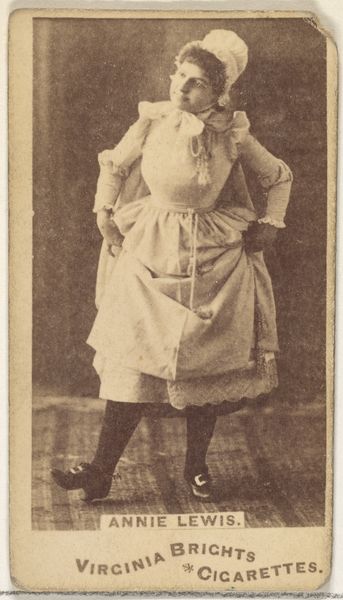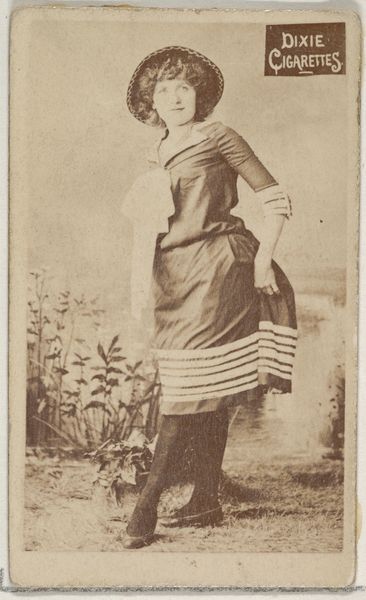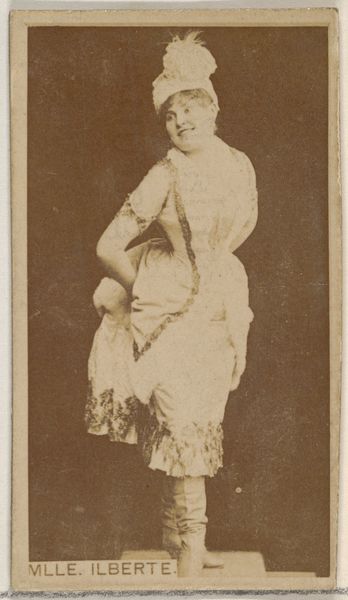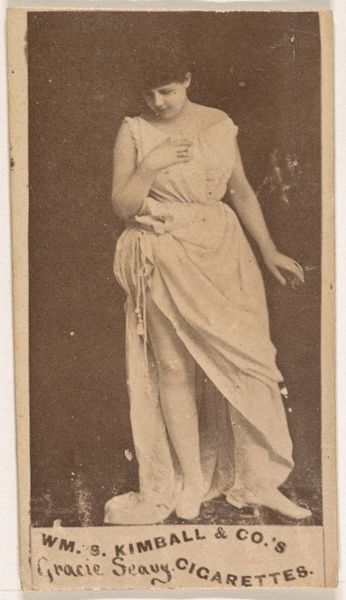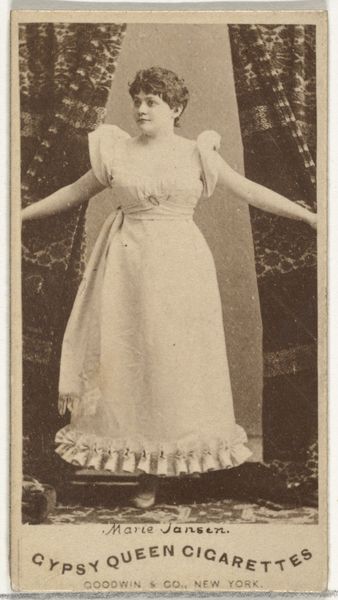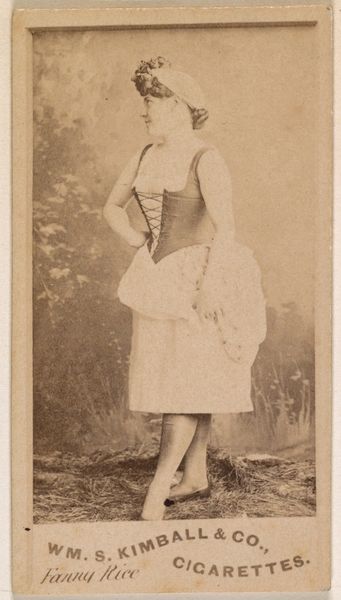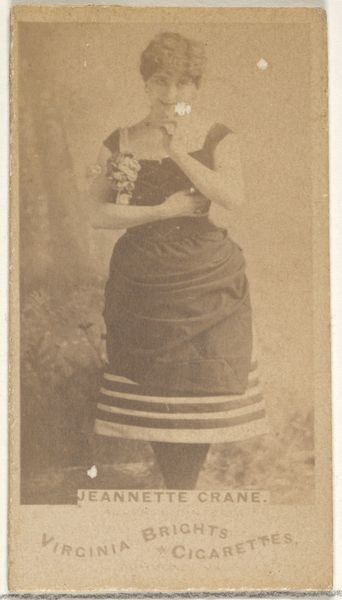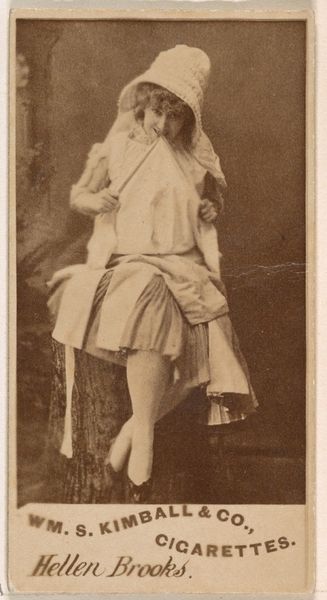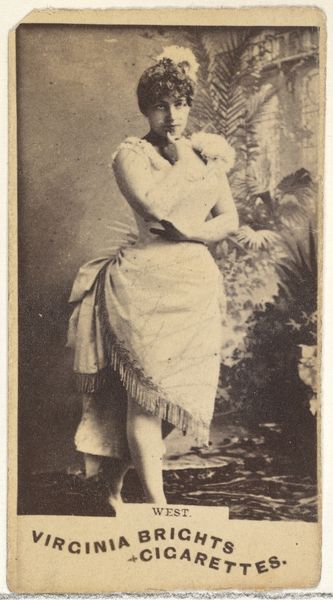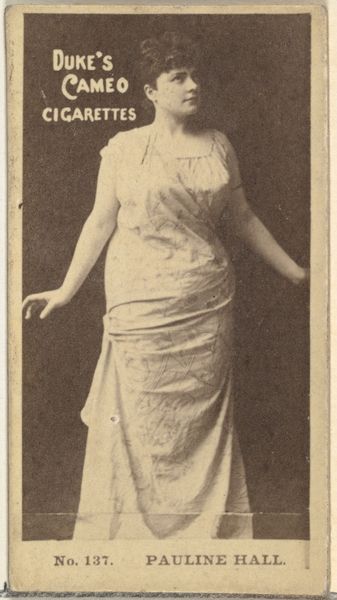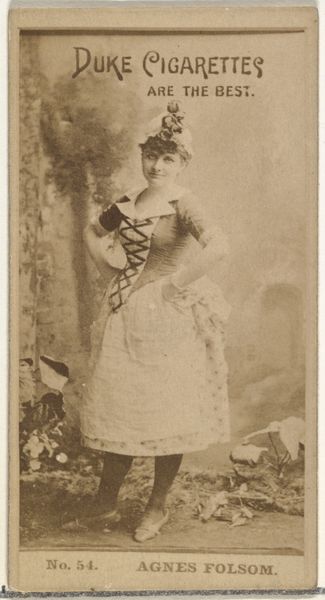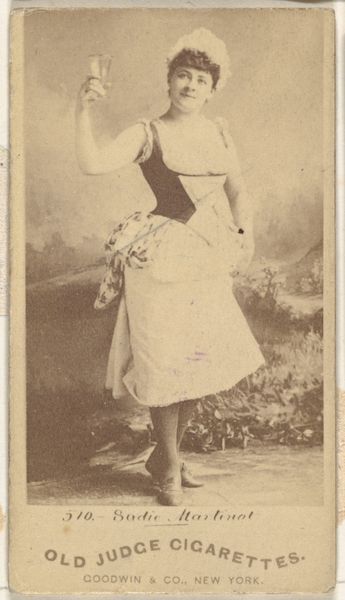
Card Number 185, Eveline Granville, from the Actors and Actresses series (N145-6) issued by Duke Sons & Co. to promote Duke Cigarettes 1880s
0:00
0:00
drawing, print, photography
#
portrait
#
drawing
# print
#
photography
#
historical photography
#
19th century
#
history-painting
Dimensions: Sheet: 2 11/16 × 1 3/8 in. (6.8 × 3.5 cm)
Copyright: Public Domain
Editor: So, this is "Card Number 185, Eveline Granville," a promotional image from the 1880s by W. Duke, Sons & Co. It was meant to advertise Duke Cigarettes, surprisingly. I find it quite elegant, but also… staged, almost artificially graceful. What do you see in it? Curator: I see a carefully constructed visual vocabulary. Note the fan behind her – it isn’t just decoration. Fans, like many accessories, became coded symbols in the 19th century. The way a woman held or used a fan could convey a range of emotions and intentions. Here, it suggests perhaps a hidden identity, or an element of performance – relevant given she is an actress. Editor: Oh, that's interesting. I hadn’t considered the fan as having its own language. It does look deliberately placed, now that you mention it. Is the rest of her attire symbolic too? Curator: Absolutely. Consider the belt around her waist. It cinches the dress, emphasizing the fashionable silhouette of the time, but it also subtly hints at restraint and control. Women in the public eye were under intense scrutiny; every aspect of their appearance was a statement. Duke Cigarettes using her likeness connects their brand to her carefully crafted persona, to aspirations of elegance, even liberation… within limits. Editor: So, it’s not just a picture, but a whole network of coded meanings aimed at potential cigarette buyers. It seems more complex than just advertising. Curator: Precisely. These images act as mirrors, reflecting societal values and aspirations back at the viewer. And that's part of their enduring power; they're artifacts of cultural memory. Editor: That makes me see it completely differently! Thanks for decoding all that. Curator: It’s a pleasure. Understanding those hidden symbols is like unlocking a secret history.
Comments
No comments
Be the first to comment and join the conversation on the ultimate creative platform.
